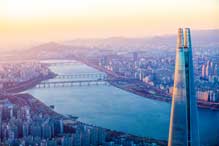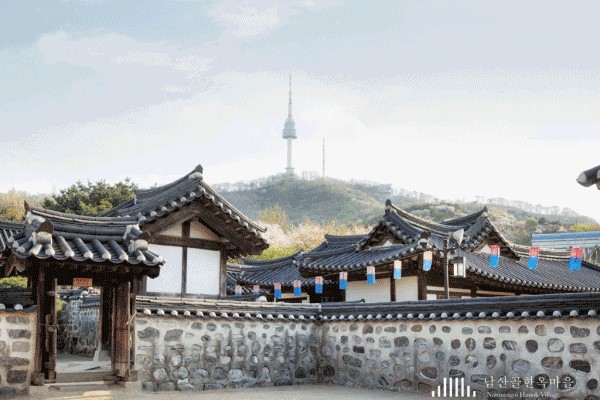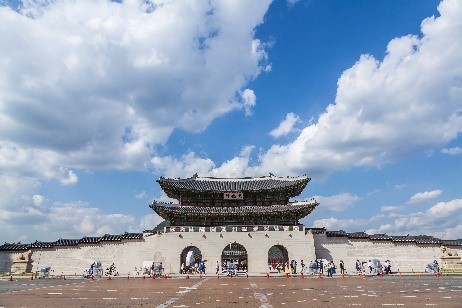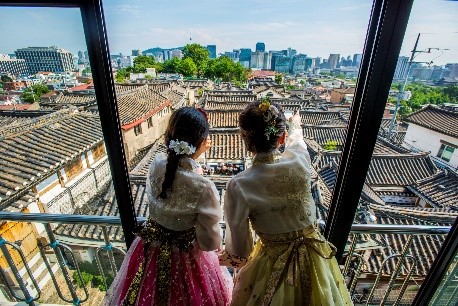Tour Programs
* The itineraries are subject to change.
Pre-Conference Tour
|
Detailed Information |
|||
|
Date |
24 August (TUE) 18:00 - 21:00 |
||
|
Itinerary * |
Grand Walkerhill Seoul – Lotte World Tower – Lotte World Mall – Grand Walkerhill Seoul |
||
|
Price |
USD 30/person (Admission to Seoul Sky included) |
||
|
Conditions |
w/ English speaking guide |
||
|
Description |
The Seoul Sky Observatory is located at the top of the Lotte World Tower, the world's fifth tallest building standing 123 stories and 555 meters high. It is the only place where you can take in a gorgeous 360-degree view of Seoul, the capital city of South Korea roaring with brilliant history and dynamic modern culture. The Observatory offers a diverse range of unique experience at any time of the year and day. |
||
|
|
|
|
|
Afternoon Tour
|
Detailed Information |
|||
|
Date |
25 August (WED) 13:00 – 18:00 |
||
|
Itinerary * |
GWS – Namsan Traditional Village–
Seoul N Tower – Namdaemun Market – Cheonggyecheon Stream – GWS |
||
|
Price |
USD 30/person (Tour admission included) |
||
|
Conditions |
w/ English speaking guide |
||
|
Description |
Mt. Namsan, located in the southern part of the traditional Seoul, has long served as a symbolic place for leisure and rest for Koreans. The () Namsan Traditional Village consists of 5 traditional houses relocated from various parts from Seoul, to show the different lifestyles of different classes existed in Joseon Dynasty. Namsan Seoul Tower Tower was the first tower-type tourism spot in Korea. The top of the tower is at almost 480m above sea level, including Namsan Mountain (243m) and the tower’s own height (236.7m). It has become one of the representative landmarks and multi-cultural venues in Seoul. Cheonggyecheon used to be a naturally formed stream before the Joseon Dynasty but was covered with concrete and a elevated highway during the 1960s and 1970s. Previously an example of successful industrialization and modernization, it has become a source of intense traffic, health and environmental issues in the 1980s and 1990s. Its restoration was completed in 2005, which has been highly praised as a restoration of natural environment, history, and culture. |
||
|
|
|
|
|
Full Day Tour
|
Detailed Information |
|||
|
Date |
26 August (THU) 09:00 – 18:00 |
||
|
Itinerary * |
GWS – Blue House (Passing)
– Gyeongbokgung Palace – National Folk Museum – Insadong Antique Street – Bukchon Hanok Village – Dongdaemun – GWS |
||
|
Price |
USD 50/person (Tour admission & Lunch included) |
||
|
Conditions |
w/ English speaking guide |
||
|
Description |
Built in 1395, Gyeongbokgung Palace is also commonly referred to as the Northern Palace because its location is furthest north when compared to the neighboring palaces of Changdeokgung (Eastern Palace) and Gyeonghuigung (Western Palace) Palace. Gyeongbokgung Palace is arguably the most beautiful, and remains the largest of all five palaces.
Bukchon Hanok Village is home to hundreds of traditional houses, called hanok, that date back to the Joseon Dynasty. The name Bukchon, which literally translates to "northern village," came about as the neighborhood lies north of two significant Seoul landmarks, Cheonggyecheon Stream and Jongno. Today, many of these hanoks operate as cultural centers, guesthouses, restaurants and tea houses, providing visitors with an opportunity to experience, learn and immerse themselves in traditional Korean culture.
Dongdaemun , a top attraction that is constantly crowded with international visitors. Some of the most representative attractions found in this area include the nation’s first designated national treasure, Heunginjimun Gate, the all-time favorite Cheonggyecheon Stream, as well as the notable landmark of this district, Dongdaemun Design Plaza (DDP). |
||
|
|
|
|
|













